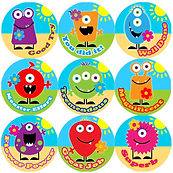top of page
Classroom Management
"The number one problem in the classrooms is not discipline; it is lack of authentic learning tasks, procedures, and routines."-Harry Wong
What is Classroom management?
Classroom management extends far beyond the surface of ensuring that a lesson unfolds nicely. It is the skills and techniques set in place by the educator in order to help their students achieve academic success. While classroom management varies within the classroom, the elements I believe to be of significant importance are: the organization of the classroom, the routines, the classroom rules, the intervention strategies, the everyday classroom management strategies as well as the rewards and praise system.
Organization
Organization is crucial in order to ensure a positive outcome within the classroom. Classroom organization not only helps with the structure of the class, it also permits the classroom environment to flow naturally and smoothly.


Routines
Routines are an effective way of helping students develop autonomy. It is a way of creating a calm, quiet and positive environment for our students to learn. Routines are an productive way of managing behaviours within the classroom while also creating a sense of responsibility amongst our students.
Rules
Within the classroom, it is vital that teachers and their students discuss the importance of rules. Without them, it leads to an unorganized classroom, in turn, negatively affecting the children's learning outcome. Rules essentially aid with the structure of the class and allow teachers to effectively and appropriately discipline their students.

Intervention
As teachers, we are often required to intervene when negative behaviours occur. However, as stated by Ron Morrish (2003) "Students learn far more from being shown how to behave appropriately than from being punished." Therefore, I believe that is it crucial that I address any minor conflicts or behavioural issues in order to prevent major problems from occurring.

Management Strategies
Everyday classroom management strategies are methods used in order to keep students actively engaged as they progress through their learning journey. Some strategies that I believe are vital are as follows: Modelling expected behaviour, have flexible seating, incorporate visual aids, provide feedback, instil self-motivation, allow some student control, provide positive reinforcement, use appropriate transitions, manage classroom noise, use wait time, use non-verbal communication and celebrate achievements.

Rewards & Praise
Reward and praise systems can be beneficial when implemented appropriately. When rewarding or praising a student, it is important to acknowledge the context, to be specific, to describe the impact of the action, and re-enforce the students identity. In showing students that you have recognized their positive actions, it is likely to continue promoting appropriate behaviours, motivate students full efforts and encourage productivity within the classroom.Praise enhances student resilience and learning outcomes. It is pivotal to use rewards and praise in a way that fosters constructive and growth mindset.It is essential that we do not praise intelligence itself; rather, praise all achievements no matter how little or big they may be.

bottom of page

